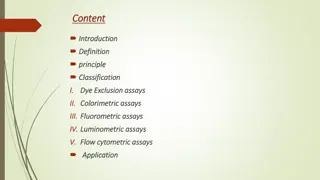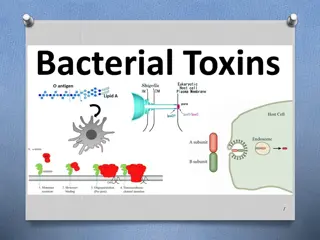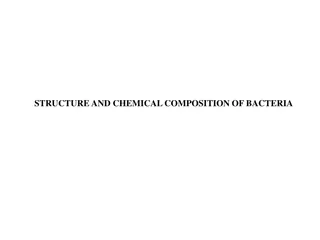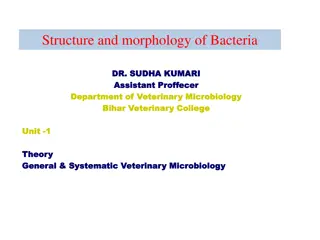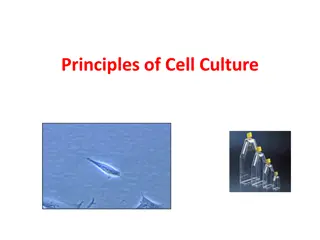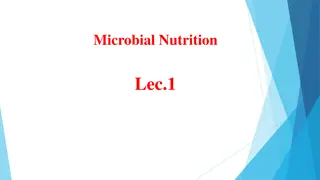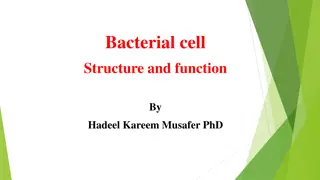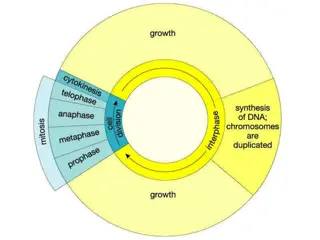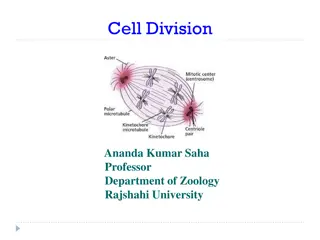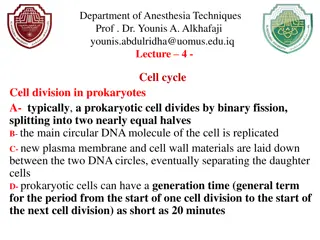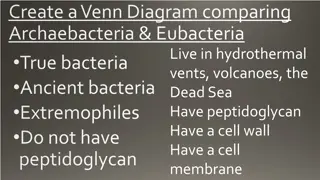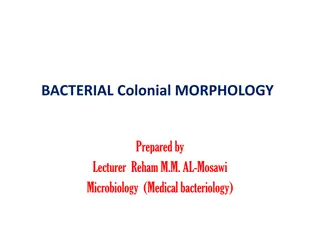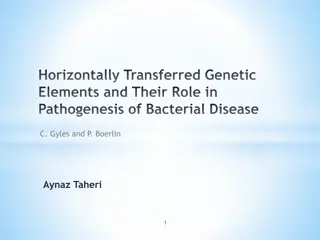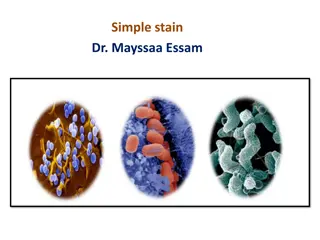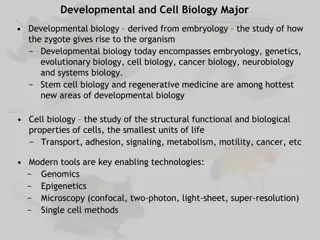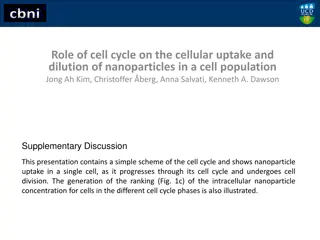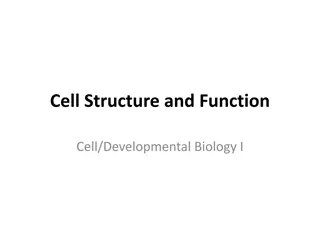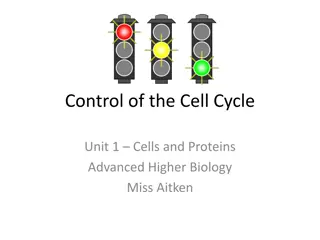Bacterial Cell Wall
The bacterial cell wall is a crucial component that provides protection, maintains cell shape, and assists in cell division. Peptidoglycan, a key polymer in the cell wall, plays a significant role in bacterial classification, especially in Gram-positive bacteria.
Download Presentation

Please find below an Image/Link to download the presentation.
The content on the website is provided AS IS for your information and personal use only. It may not be sold, licensed, or shared on other websites without obtaining consent from the author.If you encounter any issues during the download, it is possible that the publisher has removed the file from their server.
You are allowed to download the files provided on this website for personal or commercial use, subject to the condition that they are used lawfully. All files are the property of their respective owners.
The content on the website is provided AS IS for your information and personal use only. It may not be sold, licensed, or shared on other websites without obtaining consent from the author.
E N D
Presentation Transcript
Bacterial Cell Wall Class : I B.Sc Microbiology Dr. H. VAJIHA BANU Assistant Professor Department of Microbiology Jamal Mohamed College (Autonomous) Tiruchirappalli-620 020
CELLWALL The cell wall is the outer most layer of the cell. Inmany cases the cell wall comes in direct contact with the environment. Function Protection of the cell. Maintains the shapes of the cell. Maintains the osmotic integrity of the cell.
Assist some cells in attaching to other cells or in eluding antimicrobial drugs. Not present in animal cells, so can target cell wall of bacteria with antibiotics. Providing attachment sites for bacteriophages. Play an essential role in cell division. Providing a rigid platform for surface appendages- flagella, fimbriae and pili.
Peptidoglycan Peptidoglycan, a polymer consisting of sugars and amino acids that forms a mesh-like layer outside the cell membrane of most bacteria forming the cell wall. The sugar component consists of alternating residues of -(1,4) linked N-acetylglucosamine acetylmuramic acid. These subunits which are related to glucose in their structure are covalently joined to one another to form glycan chains. also known as murein, is and N-
Attached to the N-acetylmuramic acid is a peptide chain of three to five amino acids. The peptide chain can be cross-linked to the peptide chain of another strand forming the peptidoglycan.
Gram Positive Cell wall Usually thick, homogenous, composed mainly of peptidoglycan. It accounts for 50-90% of the dry weight of the cell wall. Contain large amount of teichoic acids (polymers of glycerol or ribitol joined by phosphate group).
Special components of Gram positive cell wall Teichoicacid
Teichoicacid Teichoic acids are connected to either peptidoglycan or plasma membrane lipids. Absent in gram negative bacteria. to Functionof TeichoicAcid: . Antigenic determinant (receptor molecule for bacteriophages). . Participate in the supply of Mg to the cell by binding Mg++ . Regulate normal cell division. For most part, protein is not found as a constituent of the G+ cell wall except M protein on group streptococci.
Gram Negative Cell Wall Multi layered and more complex than Gram positive cell walls. Peptidoglycan of gram negative bacteria is thin and comprises only 10% or less of cell wall. Outer membrane lies outside the thin peptidoglycan layer. Most abundant protein is Braun s lipoprotein.
Periplasm: The region between the cytoplasmic membrane and the outer membrane is filled with a gel-like fluid called periplasm. In gram negative bacteria, all secreted proteins are contained within the periplasm, unless they are specifically translocated across the outer membrane. Periplasm is filled with the proteins that are involved in various cellular activities, including nutrient degradation and transport.
Outermembrane Peptidoglycan membrane in the gram negative bacteria. layer is surrounded by outer Its outside leaflet is made up of lipopolysaccharides, rather than phospholipids. For this reason, the outer membrane is also called the lipopolysaccharide layer or LPS. The outer membrane functions as a protective barrier and excludes many toxic compounds.
Lipopolysaccharide molecule is extremely important from a medical stand point. It consists of three parts, two of them are medically significant. 1.Lipid A ..embedded in membrane. 2.Core polysaccharide ..located on membrane. 3.O antigens .which extended out from core. the surface of polysaccharides are short
Lipid A: The chemical makeup of lipid A molecule plays significant role in our body s ability to recognize the presence of invading bacteria. It is toxic in nature, as a result the LPS can act as an endotoxin, causing symptoms like fever, diarrhea and shock. O-antigen: including glucose, other sugars in varying combinations. The O-antigens antibodies. It is composed galactose, mannose and some of carbohydrates, their specific can react with



